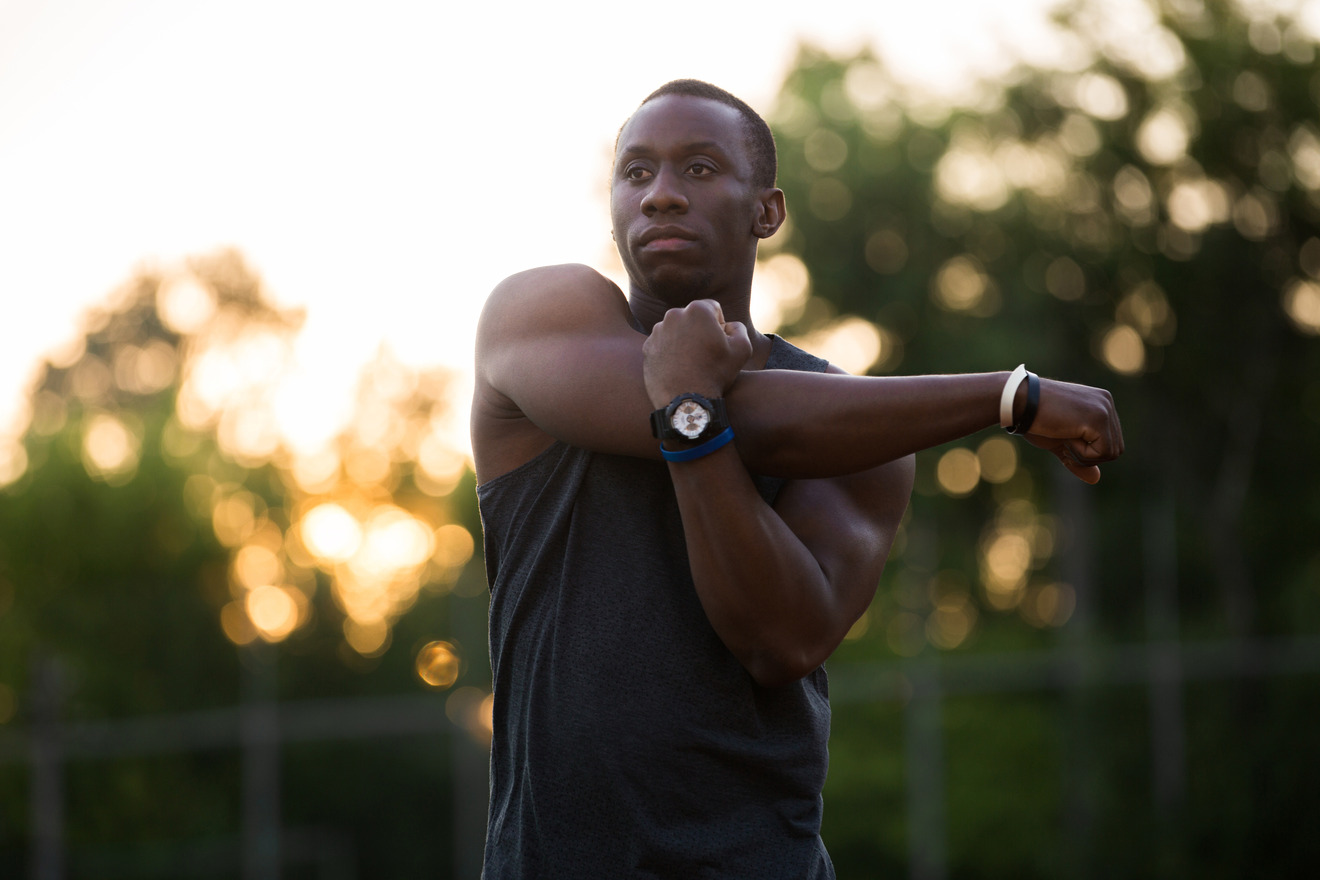Should I use dynamic or static stretching for my warm-up?
Key takeaways
- Dynamic stretching consists of moving your muscles and joints through their full range of motion in a controlled manner.
- Static stretching, on the other hand, consists of holding a stretch for a prolonged period of time.
- Dynamic stretching is more ideal for the warm-up, whereas static stretching is better for post-workout recovery. This is because dynamic stretching activates your muscles and increases blood flow, whereas static stretching promotes flexibility and relaxation of tight muscles.
- For a well-rounded routine, it is better to use dynamic stretching for the warm-up before your workout and then static stretching after your workout.
Dynamic versus static stretching
Stretching is a crucial part of any fitness routine, but the debate over dynamic versus static stretching for warm-ups has many gym-goers wondering which method will best prepare their body for exercise. Both forms of stretching have their place in fitness routines, but they serve different purposes, and knowing which to incorporate into your warm-up can make a significant difference in your performance and injury prevention.
In this article, we’ll break down the science behind dynamic and static stretching, how each affects your muscles, and why one may be better suited for warm-ups than the other. By the end, you’ll have a clear understanding of which stretching technique will help you get the most out of your workout and how to warm-up better.
Understanding dynamic stretching
Dynamic stretching involves moving your muscles and joints through their full range of motion in a controlled, repetitive manner. Unlike static stretching, where you hold a position for a set time, dynamic stretches are movement-based and designed to warm up your muscles by mimicking the actions of the workout or sport you’re about to perform.
Dynamic stretching increases blood flow to your muscles, raising your body temperature and preparing your joints for movement. This type of stretching engages multiple muscle groups at once and improves your neuromuscular efficiency—the connection between your brain and muscles—leading to improved coordination, reaction times, and overall performance.
Some common examples of dynamic stretches include leg swings, arm circles, walking lunges, and high knees. These exercises are typically performed in sets of 8 to 12 repetitions, gradually increasing in intensity.
The benefits of dynamic stretching
Dynamic stretching offers a range of benefits, especially when used before workouts:
- Improved muscle activation: dynamic stretching activates the muscles you’ll use during your workout, making them more responsive and reducing the likelihood of injury.
- Increased flexibility and range of motion: because dynamic stretching moves your joints through their full range of motion, it helps increase flexibility and mobility, allowing for smoother, more efficient movement.
- Enhanced blood flow and circulation: by moving continuously, dynamic stretches get your blood flowing to your muscles, which warms them up and increases their elasticity. This reduces the risk of strains or pulls during your workout.
- Better performance: studies have shown that dynamic stretching before exercise can enhance athletic performance, particularly in activities that require strength, speed, and power. The dynamic movements help prepare your body for the demands of your workout by improving muscle control and reaction time.
What is static stretching?
Static stretching, on the other hand, involves holding a stretch for a prolonged period, usually between 15 to 60 seconds. This type of stretching is commonly used to improve flexibility by elongating the muscle and holding it in a fixed position.
Static stretching works by lengthening the muscle fibers, improving flexibility and muscle tension. It’s a popular post-workout practice because it helps reduce muscle tightness and prevent injury. However, its role in warm-ups has been debated in recent years.
Some examples of static stretches include touching your toes to stretch the hamstrings, holding a quadriceps stretch, or performing a seated forward fold to stretch the lower back and hamstrings.
The benefits of static stretching
Static stretching does have its own set of benefits, but these are often best realized after a workout, not before:
- Improved flexibility: static stretching helps lengthen the muscles, improving long-term flexibility. Over time, incorporating static stretching into your routine can help increase your range of motion.
- Injury prevention: stretching after a workout helps to relieve muscle tension and can prevent tightness or stiffness, which reduces the risk of injury in the long term.
- Muscle recovery: static stretching encourages blood flow to the muscles, aiding in the removal of lactic acid buildup and promoting recovery after exercise.
- Relaxation: Holding static stretches can help calm your nervous system, reduce stress, and relax tight muscles, making it a great way to cool down after an intense workout.
Which is better for warm ups?
While both forms of stretching offer significant benefits, dynamic stretching is widely considered superior for warm-ups. This is because dynamic stretching mimics the movements you’ll perform during your workout, gradually increasing your heart rate and preparing your muscles for action. Since dynamic stretches increase blood flow and joint lubrication, your risk for injury is decreased during your workout. In contrast, static stretching can increase the risk of strains or pulls if your muscles are not yet properly warmed up prior to stretching. Dynamic stretching also helps to loosen up your muscles and improve joint mobility which allows you to move more freely during your workout, reducing stiffness and enhancing overall performance.
When to use static stretching
While dynamic stretching is the go-to for warm-ups, static stretching is still valuable—just in a different context. Static stretches are most beneficial after your workout when your muscles are already warm. Stretching at this time helps improve flexibility, reduce soreness, and prevent stiffness. Holding stretches post-workout can also encourage relaxation and aid in muscle recovery.
If flexibility is your goal, static stretching can be incorporated into a separate session outside of your warm-up routine. Many people find that performing static stretches after dynamic movements during cool-downs helps maintain long-term flexibility without compromising strength or performance.
Combining both for a well-rounded routine
The best approach to stretching may not be to choose one over the other but rather to combine both forms strategically. A complete workout routine includes dynamic stretching to get your muscles ready for action and static stretching to help your body recover after the workout.
For example, you might start your workout with 5 to 10 minutes of dynamic stretches such as leg swings, arm circles, and walking lunges. After your session, spend some time performing static stretches to lengthen and relax your muscles, holding each stretch for 15 to 30 seconds.
Go for balance
In the debate of dynamic stretching vs static stretching for warm-ups, dynamic stretching takes the win. Its ability to increase blood flow, improve mobility, and prime your muscles for movement makes it the best choice for pre-workout preparation. However, static stretching still plays an important role in post-workout recovery, improving flexibility and relaxing tight muscles.
Ultimately, a balanced fitness routine should incorporate both types of stretching at the appropriate times. By using dynamic stretching before your workout and static stretching afterward, you’ll not only enhance performance but also reduce the risk of injury and promote long-term flexibility.
Written with the assistance of AI. Reviewed and edited by: Marielle Livelo.







